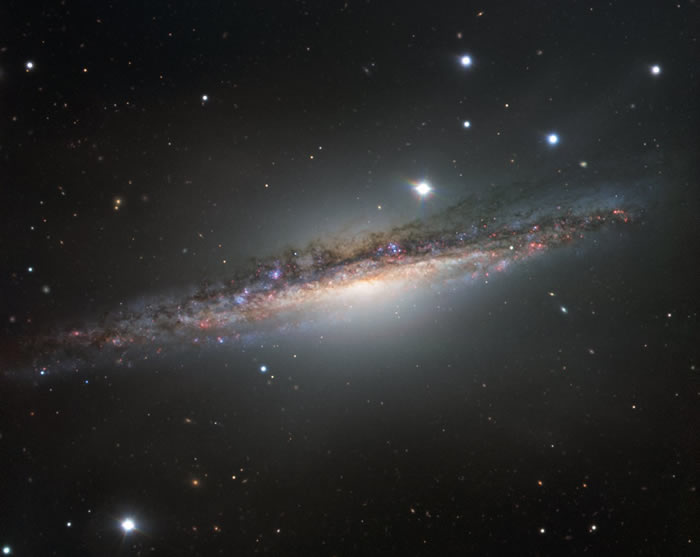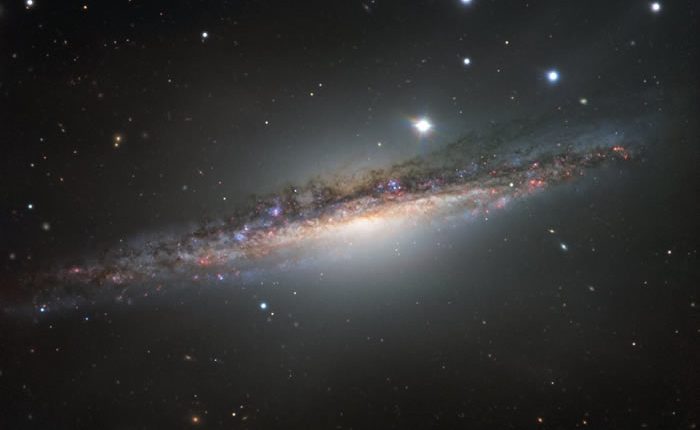This galaxy is living life on the edge
Throughout the Universe spiral galaxies take on all manner of orientations with respect to Earth.
There are some that are seen from above, (as it were) or ‘face-on’ – a good example of this being the whirlpool-shaped galaxy NGC 1232. Such orientations reveal a galaxy’s flowing arms and bright core in beautiful detail, but make it difficult to get any sense of a three-dimensional shape.
 There are galaxies, such as the NGC 3521, that we see at angles. While these tilted objects begin to reveal the three-dimensional structure within their spiral arms, fully understanding the overall shape of a spiral galaxy requires an edge-on view – such as this one of NGC 1055.
There are galaxies, such as the NGC 3521, that we see at angles. While these tilted objects begin to reveal the three-dimensional structure within their spiral arms, fully understanding the overall shape of a spiral galaxy requires an edge-on view – such as this one of NGC 1055.
When seen edge-on, it is possible to get an overall view of how stars, both new patches of starbirth and older populations, are distributed throughout a galaxy, and the ‘heights’ of the relatively flat disc and the star-loaded core become easier to measure.
Material stretches away from the blinding brightness of the galactic plane itself, becoming more clearly observable against the darker background of the cosmos.
Such a perspective also allows astronomers to study the overall shape of a galaxy’s extended disc, and to study its properties.
One example of this is warping, which is something we see in NGC 1055. The galaxy has regions of peculiar twisting and disarray in its disc, likely caused by interactions with the nearby galaxy Messier 77. This warping is visible here; NGC 1055’s disc is slightly bent and appears to wave across the core.
NGC 1055 is located approximately 55 million light-years away in the constellation of Cetus (The Sea Monster).
More information: Phys.org

